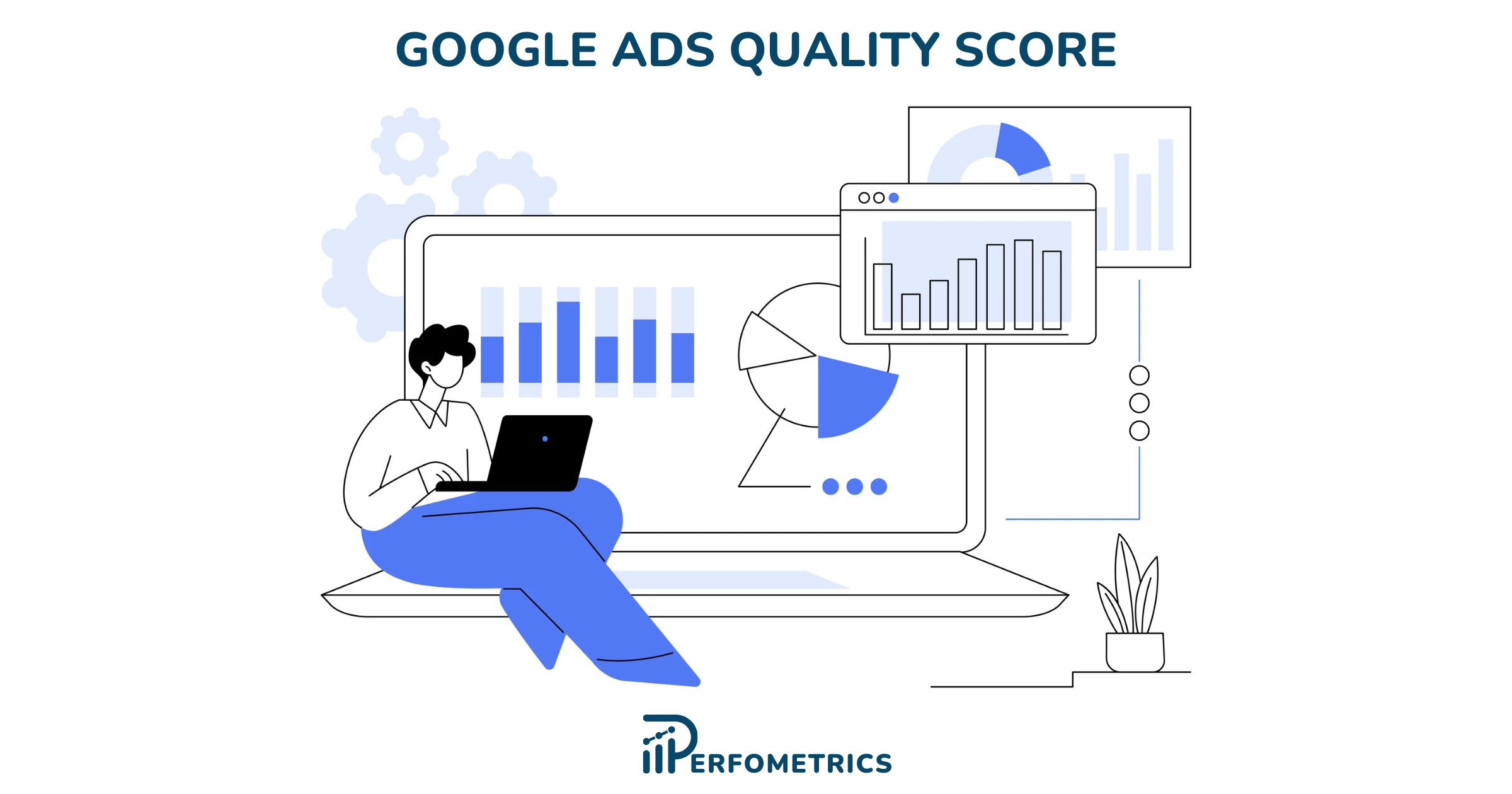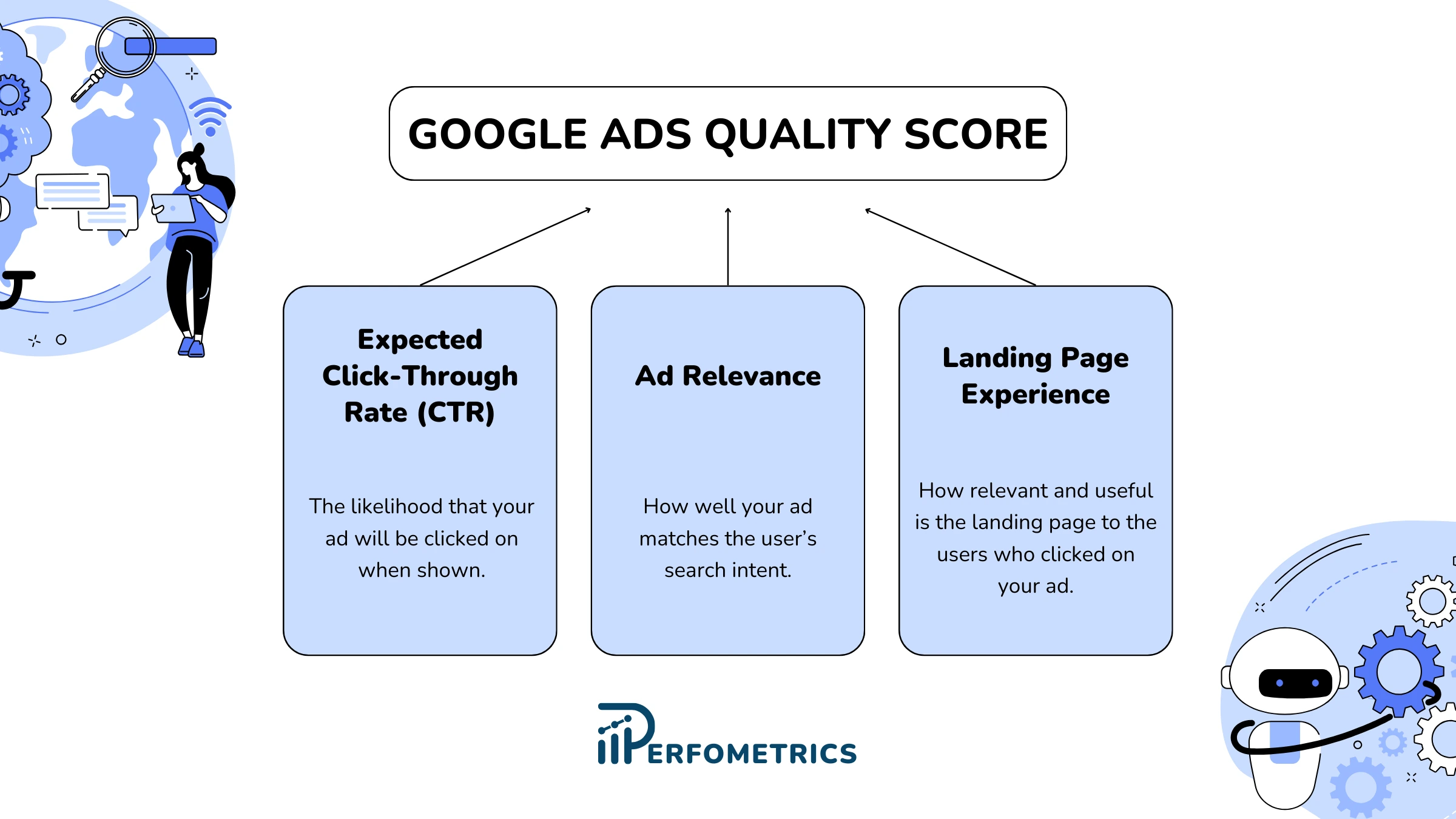What is Quality Score in Google Ads? Everything You Need to Know

Have you ever wondered why some ads perform better than others, even with similar budgets?
The secret often lies in Quality Score – a diagnostic metric in Google Ads. Understanding and improving this score isn’t just a nice-to-have; it’s essential for optimizing your Google Ads campaigns, lowering costs, and increasing visibility.
What is Quality Score in Google Ads?
At its core, Quality Score is Google’s way of rating the relevance and quality of your ads, keywords, and landing pages. Think of it as a report card that helps Google decide how helpful your ad will be to someone searching for your target keywords.
How It Works
Google Ads Quality Score is measured on a scale from 1 to 10, with 10 being the best. A higher score means your ad and landing page are highly relevant to the user’s search intent. This isn’t just for show – your Quality Score affects:
- Cost-Per-Click (CPC): Higher scores lead to lower costs.
- Ad Rank: A better score improves your position on the search results page.
Why It Matters
Imagine you’re bidding for a keyword like “leather watch straps.” Your competitor might bid higher, but if your ad and landing page are more relevant, you could win the top spot at a lower cost. That’s the power of Quality Score.
Real-World Example
Let’s say you’re running a campaign for eco-friendly water bottles. Two ads target the keyword “buy sustainable water bottles:”
- Ad A has an engaging headline, clear messaging, and a landing page offering related products.
- Ad B is vague and links to a generic homepage.
Google’s algorithm will favor Ad A with a higher Quality Score, leading to better placement and lower CPC.
How is Quality Score Calculated in Google Ads?
Google doesn’t reveal the exact formula, but we know that Quality Score is calculated using both historical data and real-time signals. Here’s what goes into it:
- Expected Click-Through Rate (CTR): This is Google’s prediction of how often your ad will be clicked based on past performance.
- Ad Relevance: How well your ad matches the intent behind the user’s search query.
- Landing Page Experience: Does your landing page provide value? Is it fast, mobile-friendly, and relevant?

What Are the Key Components of Quality Score in Google Ads?
1. Expected Click-Through Rate (CTR)
This measures how likely users are to click on your ad. Google favors ads that attract clicks because it signals relevance.
- Tip: Write compelling headlines and descriptions that directly address user needs. Use action verbs like “Shop Now” or “Discover More.”
- Example: Instead of “Quality Shoes,” try “Run Faster with Our Lightweight Shoes.”
2. Ad Relevance
Ad relevance measures how closely your ad matches the intent of the search query. If someone searches for “free online courses,” and your ad talks about paid certifications, your relevance score will drop.
- Tip: Use tightly themed ad groups and ensure your keywords align with your ad copy.
- Example: For the keyword “hiking backpacks,” your ad should say, “Top-Quality Hiking Backpacks – Built for Adventure.”
3. Landing Page Experience
Google wants to send users to pages that provide value. If your landing page loads slowly or doesn’t match the promise of your ad, your score will suffer.
- Tip: Optimize for speed, relevance, and mobile usability. Provide clear CTAs and engaging content.
- Example: If your ad promotes “10% off organic skincare,” your landing page should highlight that discount prominently.

Interpreting Quality Score Ratings
Quality Score ratings range from 1 to 10, with higher quality scores reflecting increased relevance and better ad performance. A low Quality Score, on the other hand, indicates decreased relevance and poorer ad performance. To interpret these ratings and understand how the quality score calculated, you should understand the meaning behind “Above Average,” “Average,” and “Below Average” ratings.
“Above Average” implies that the component is performing better than anticipated, “Average” indicates that it is performing as expected, and “Below Average” indicates that the component is underperforming. Interpreting these ratings can help pinpoint areas that need improvement and prioritize optimization efforts, which in turn can enhance your Quality Score and improve ad performance.
Example Calculation
If your ad targets the keyword “best running shoes,” but your landing page focuses on general athletic gear, your Ad Relevance and Landing Page Experience scores will drop. This pulls down your overall Quality Score, even if your CTR is decent.
Common Misconceptions
- Quality Score is Static: False. It changes based on keyword performance and user behavior.
- It Only Matters for Keywords: Not quite. Your ad copy and landing page play huge roles too.
Our Final Thoughts
Quality Score is more than just a number; it’s a roadmap to creating effective, user-focused ad campaigns. By understanding what it is, how it’s calculated, and the key components, you can:
- Lower your advertising costs.
- Improve ad visibility and performance.
- Drive better results for your business.
Start by evaluating your current ads. Are they relevant? Are your landing pages optimized? Taking these steps will not only boost your Quality Score but also make your Google Ads campaigns more impactful. Ready to level up your strategy?



